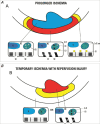Contributions of Pathobiological and Translational Science to Understanding and Managing Ischemic Heart Disease: Progress, Impediments, and Future Directions
- PMID: 40692587
- PMCID: PMC12277578
- DOI: 10.145403/THIJ-25-8609
Contributions of Pathobiological and Translational Science to Understanding and Managing Ischemic Heart Disease: Progress, Impediments, and Future Directions
Abstract
Key pathobiological components of ischemic heart disease have been identified as follows: (1) In 1970 to 1973, myocardial infarct size was found to be the primary determinant of prognosis after acute myocardial infarction (AMI); (2) in 1973 to 1989, vulnerable coronary artery plaques were found to predispose individuals to coronary plaque disruption and thrombosis, causing major AMI; (3) in 1972, timely coronary reperfusion was demonstrated to limit the size of evolving AMI but with risk of reperfusion injury; and (4) in 1986, myocardial conditioning was found to be a clinically significant modulator capable of delaying AMI progression. Promising cardioprotective strategies combining timely reperfusion with conditioning in experimental animal and proof-of-concept human studies have not been shown to optimize cardioprotection, and this area of research has stalled. Nevertheless, opportunities for further progress against ischemic heart disease have come from new perspectives and approaches, including (1) recognition that functionally significant ischemic heart disease can result from microvascular dysfunction or epicardial coronary atherosclerosis; (2) rapid diagnosis of AMI subtypes through application of the Universal Definition of Myocardial Infarction based on high-sensitivity cardiac troponin measurements; (3) the Canadian Cardiovascular Society classification of AMI based on stages of tissue injury severity, as detected by advanced imaging; (4) implementation of the occlusion vs nonocclusion MI paradigm to prompt aggressive management of all ST-segment elevation MI and the one-third of non-ST-segment elevation MI with total occlusion; and (5) implementation of the Early Heart Attack Care program, which emphasizes prodromal symptom recognition to prevent AMI progression.
Keywords: Ischemic heart diseases; death, sudden, cardiac; myocardial infarction; myocardial reperfusion injury.
© 2025 The Authors. Published by The Texas Heart Institute®.
Conflict of interest statement
Conflict of Interest Disclosures: None.
Figures



Similar articles
-
The experimental promise and clinical reality of myocardial conditioning for prevention of myocardial ischemia and reperfusion injury: an umbrella review of systematic reviews.Minerva Med. 2025 Aug;116(4):292-299. doi: 10.23736/S0026-4806.25.09660-0. Epub 2025 May 15. Minerva Med. 2025. PMID: 40371615
-
[Volume and health outcomes: evidence from systematic reviews and from evaluation of Italian hospital data].Epidemiol Prev. 2013 Mar-Jun;37(2-3 Suppl 2):1-100. Epidemiol Prev. 2013. PMID: 23851286 Italian.
-
Remote ischaemic preconditioning for coronary artery bypass grafting (with or without valve surgery).Cochrane Database Syst Rev. 2017 May 5;5(5):CD011719. doi: 10.1002/14651858.CD011719.pub3. Cochrane Database Syst Rev. 2017. PMID: 28475274 Free PMC article.
-
Exercise-based cardiac rehabilitation for coronary heart disease.Cochrane Database Syst Rev. 2016 Jan 5;2016(1):CD001800. doi: 10.1002/14651858.CD001800.pub3. Cochrane Database Syst Rev. 2016. Update in: Cochrane Database Syst Rev. 2021 Nov 6;11:CD001800. doi: 10.1002/14651858.CD001800.pub4. PMID: 26730878 Free PMC article. Updated.
-
Signs and symptoms to determine if a patient presenting in primary care or hospital outpatient settings has COVID-19.Cochrane Database Syst Rev. 2022 May 20;5(5):CD013665. doi: 10.1002/14651858.CD013665.pub3. Cochrane Database Syst Rev. 2022. PMID: 35593186 Free PMC article.
References
-
- Buja LM, McDonald MM, Zhao B, Narula N, Narula J, Barth RF. Insights from autopsy-initiated pathological studies of the pathogenesis and clinical manifestations of atherosclerosis and ischemic heart disease: part I. Atherosclerosis. Cardiovasc Pathol. 2025;;76:107726. doi: 10.1016/j.carpath.2025.1077265. - DOI - PubMed
-
- Buja LM, McDonald MM, Zhao B, Narula N, Narula J, Barth RF. Insights from autopsy-initiated pathological studies of the pathogenesis and clinical manifestations of atherosclerosis and ischemic heart disease: part II. Ischemic heart disease. Cardiovasc Pathol. 2025;;76:107727. doi: 10.1016/j.carpath.2025.107727. - DOI - PubMed
Publication types
MeSH terms
LinkOut - more resources
Full Text Sources

